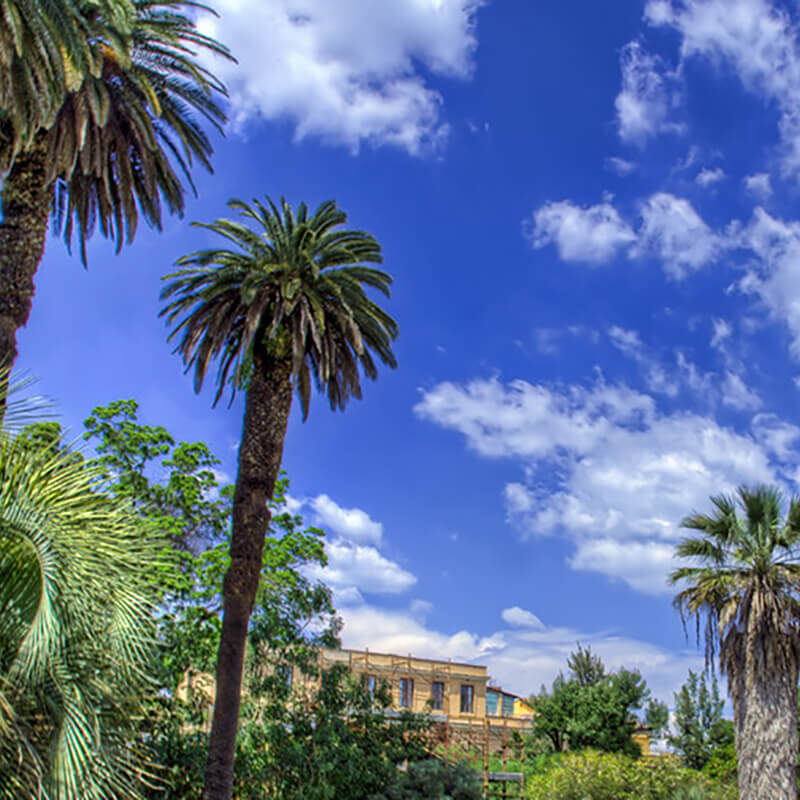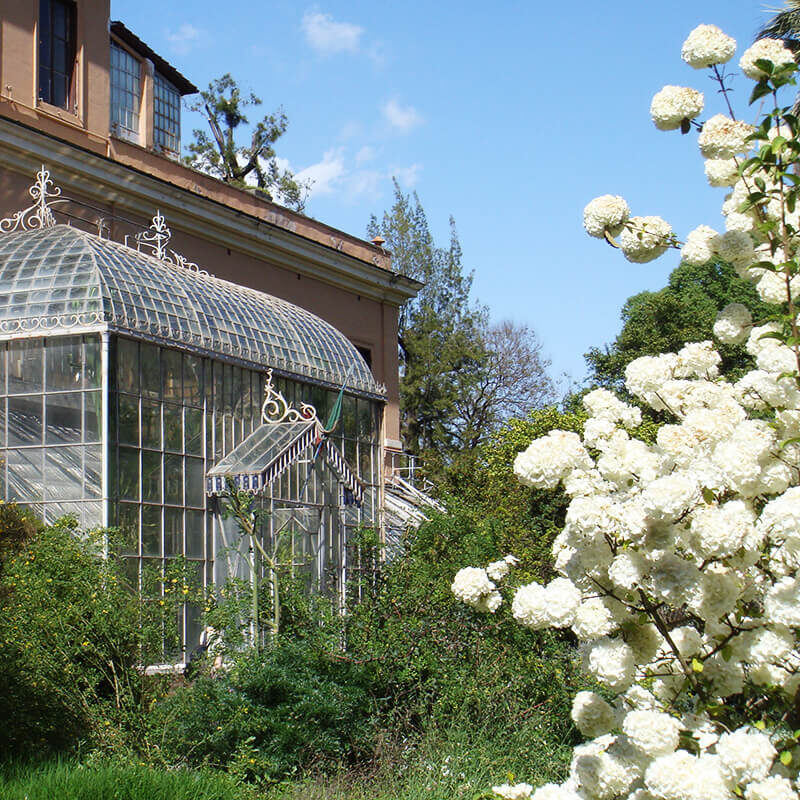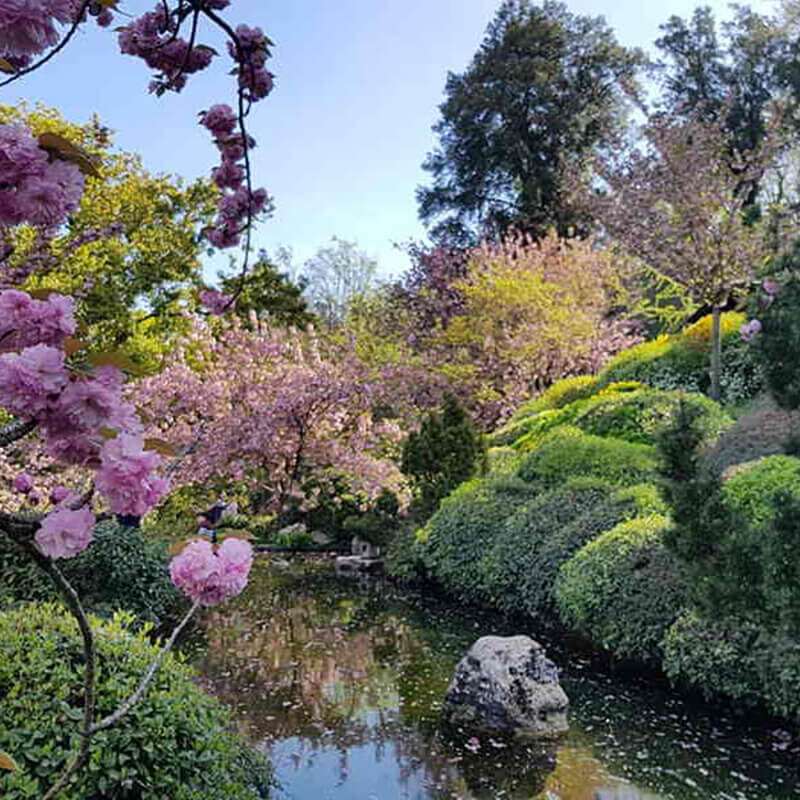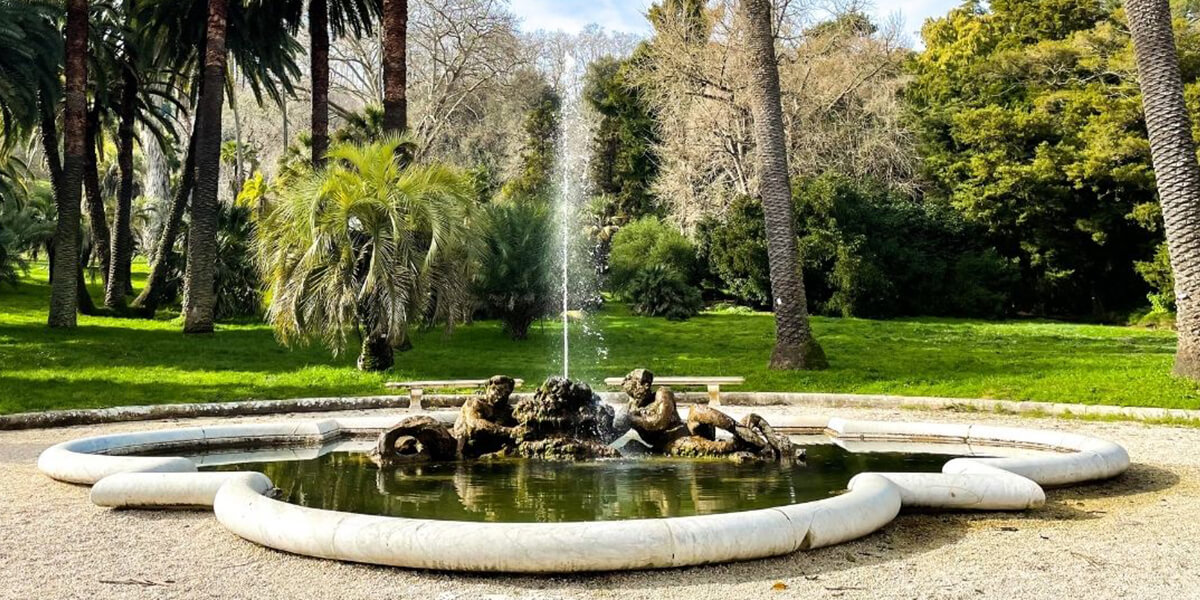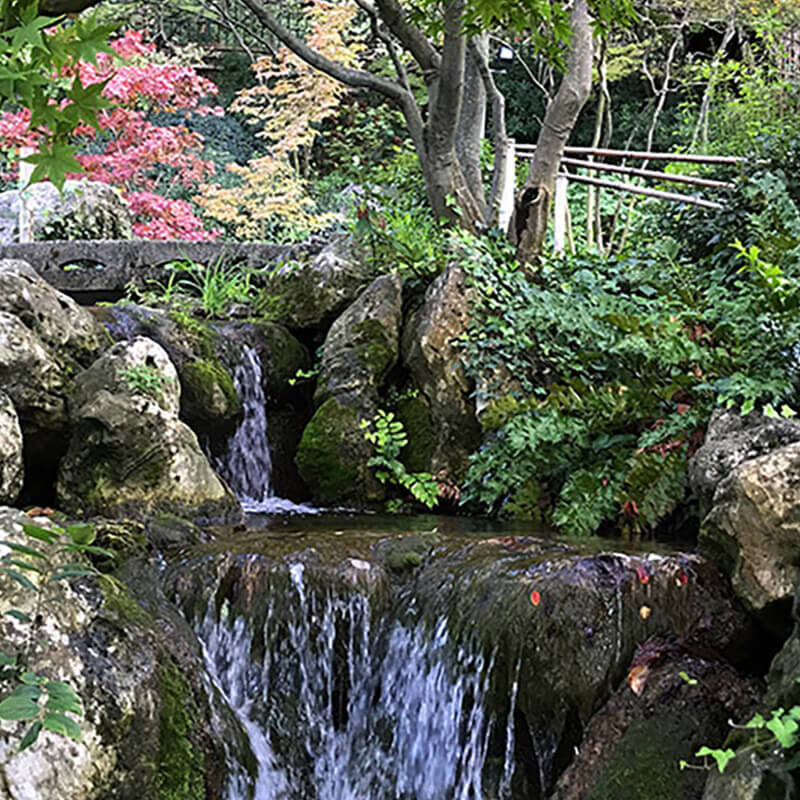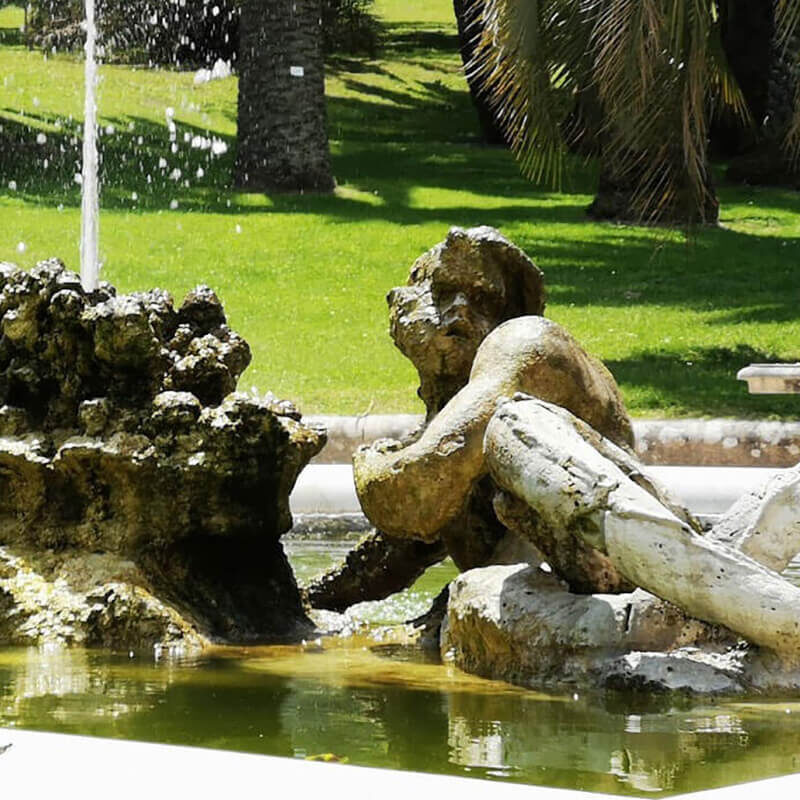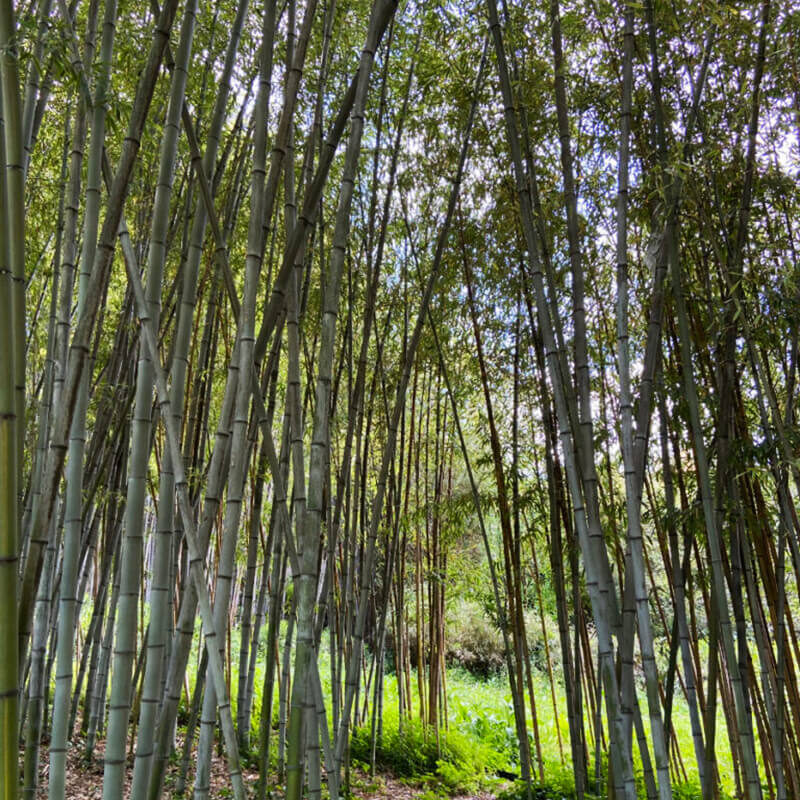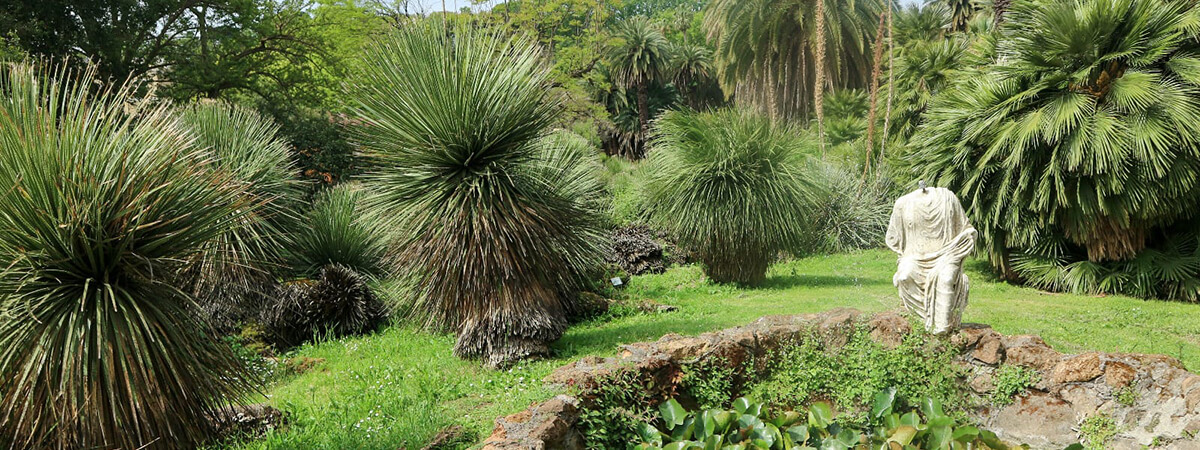In the Garden of the Finzi Contini, the writer Giorgio Bassani describes seven tall palm trees, the Washingtonia Gracilis, of which the young protagonist Micol is so fond to the point of calling them “my seven old men“. Those palm trees are still there today, where the writer saw them: in the Botanical Gardens of Rome. Bassani loved walking in this place and in the literary fiction of the Ferrara garden of the Finzi Contini family he brought some plants and many sensations of this Roman corner.
Located on the slopes of the Gianicolo Hill, Rome’s Botanical Garden is immersed in the city fabric, and this position alone makes it particular because vegetable gardens and botanical gardens, due to their need for large spaces, are often peripheral to the cities that host them. Here, however, we find ourselves in the heart of Trastevere, between Via della Lungara and the Gianicolo heights, a stone’s throw from the Tiber river and Villa Farnesina, a true Renaissance myth that saw Raphael and his young students among its many artists.
The Botanical Garden of Rome extends over twelve hectares and is one of the largest botanical gardens in Italy. The Botanical Garden belongs to the garden of Palazzo Corsini alla Lungara, which today houses two prestigious institutions: the Accademia dei Lincei and the National Gallery of Ancient Art, the first state art gallery created after the unification of Italy.
At the heart of the Botanical Garden of Rome is Palazzo Riario; in 1736 the palace was purchased by a new family, the very rich Corsini of Florence, grandchildren of Pope Clement XII, the creator of the Trevi Fountain. The small Palazzo Riario was totally renovated and enlarged by the expert hands of the architect Ferdinando Fuga, who transformed it into the elegant Palazzo Corsini, while the garden was transformed according to new needs, with arboreal architecture and fountains.
The architect Fuga built a monumental staircase that led from Palazzo Corsini to the top of the Gianicolo, embellishing it with pools at different levels that create the Fountain of the Eleven Spouts. The staircase and the gurgling of water are still there to welcome the visitor who ventures into the upper part of the Gianicolo slopes, used by the Corsini as an area for horse hunting.
In 1883 the Italian State purchased the entire property and, over time, made it the seat of prestigious institutions; the park, with its history and its centuries-old plants became the Botanical Garden of La Sapienza University, previously established by Alexander VII Chigi on the Gianicolo.
The naturalistic variety of the Botanical Garden of Rome is impressive, an oasis of enveloping beauty and serenity with birds flying freely among the branches. In the Botanical Garden there are over 3000 botanical species: from the tropical and subtropical ones, to which special greenhouses are dedicated, to the areas dedicated to bamboos, roses and ferns, up to the tub of thread-like papyrus, a true rarity in Italy. And continue with the Giardino dei Semplici, a precious memory of the healing middle ages, in which medicinal plants were cultivated for the so-called simple people to aid medicine.
Near the entrance is the large Palm Avenue, which boasts one of the most substantial collections: around one hundred specimens of 40 different palm species from the Mediterranean area, some of which are rare and at risk of extinction. As many as 345 multi-centenary specimens are preserved in the Botanical Garden of Rome, such as the four imposing oriental plane trees that surround the Scalinata del Fuga; one of them is more than 300 years old. On the slopes there is a forest thick with majestic trees: oaks, sequoias, firs and holm oaks that provide shade and rest, with several centenary specimens among the dense vegetation.
On the highest part of the Botanical Garden is the Japanese Garden, a small corner of the East in Trastevere designed in 1991 by architect Ken Nakajima. Here the main element is water which creates waterfalls and lakes on multiple levels, and where the vegetation becomes almost ethereal with camellias, evanescent water lilies and cherry trees which bloom in their pink splendor in April. A small pavilion with a vaguely oriental air welcomes visitors with its seats after the climb, to offer a moment of rest to admire the roofs of the city from above that extends as far as the eye can see. A moment of contemplation and gratitude for such beauty.
Returning to the Garden of the Finzi Contini, but this time in the historic film adaptation by Vittorio De Sica from 1970 and winner of an Oscar in 1972, we leave you with one last anecdote. The magic of the Botanical Garden of Rome, to be precise the area of the Scalinate del Fuga, was one of the cinematic settings of the film directed by De Sica. Other “garden” scenes, however, were filmed in Villa Ada Park.
Do you want to get to know ancient and modern Rome and discover the places, facts, stories, legends, anecdotes and characters that have made the history of the Capital? Contact me to book a guided tour of Trastevere, or to book one of my popular tours and guided visits in Rome and its province. If you want to enjoy Trastevere thoroughly, remember that we also offer typical experiences of art, food and crafts in Trastevere, as well as in the main districts of the capital.
Follow us on social networks, and comment on the posts and stories we publish on Facebook and Instagram.

